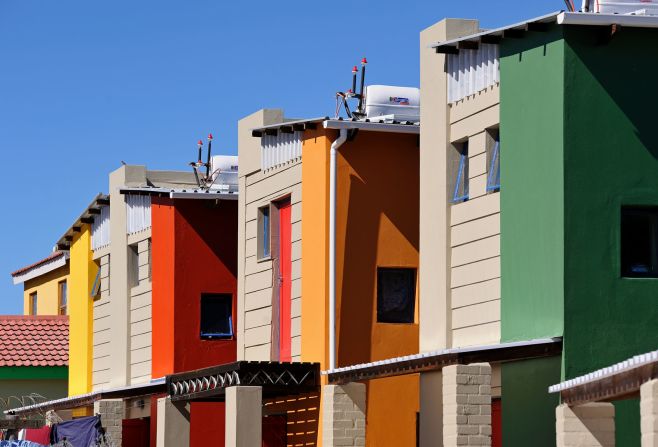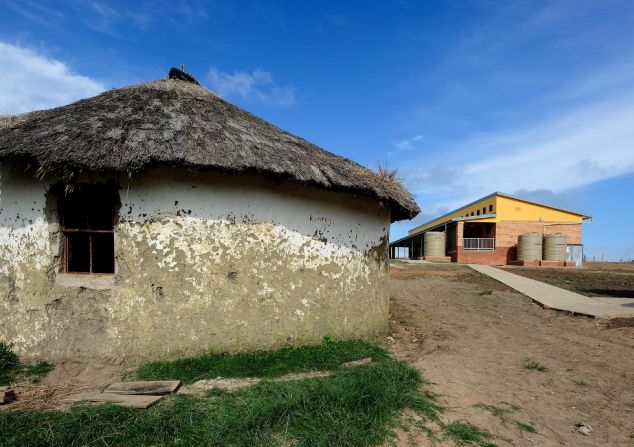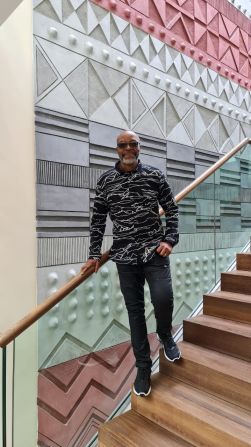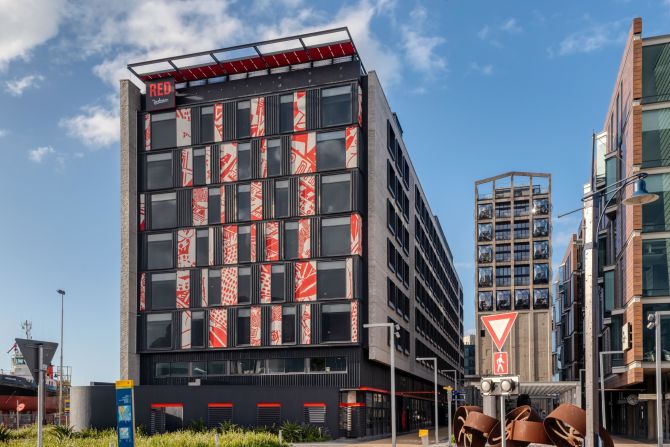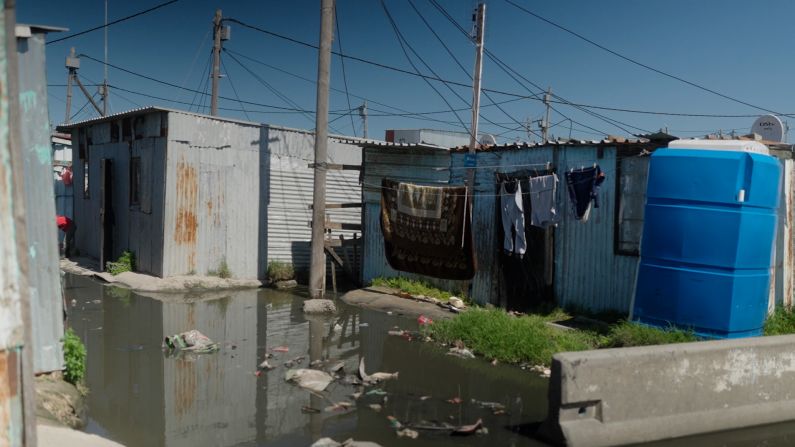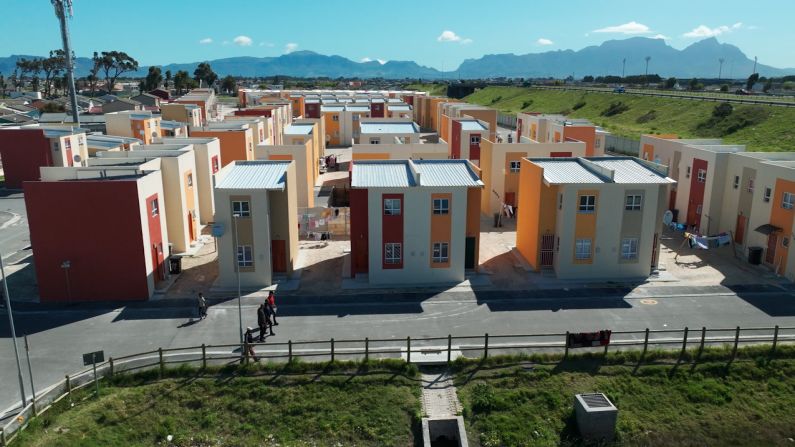As a young boy growing up in the 1960s in Mthatha, South Africa, Luyanda Mpahlwa loved to draw houses.
“I would draw this house on a slate, and I would show my mother when I got home,” said Mpahlwa, founder and director of the award-winning Cape Town-based architecture firm Design Network, formerly DesignSpaceAfrica.
He didn’t know those drawings were just the beginnings of the blueprint of his life’s work.
Mpahlwa was among the first Black Africans permitted to study architecture in South Africa. However, his academic pursuits were derailed in 1981 when he was arrested at the height of the anti-apartheid movement after refusing to “give evidence against the three accused in a treason trial,” he said.
The architect ended up spending five years in the infamous Robben Island Prison, where Nelson Mandela was held from 1964 to 1982, for anti-apartheid activities.
“I think that shaped my whole consciousness going forward,” said Mpahlwa.
The South African architect is now using his firsthand experience with systemic racism as a catalyst for designing spaces that champion inclusion and tackle some of South Africa’s pressing social issues.
“I use the power of architecture to drive social change,” he said, “and to transform spaces and places.”
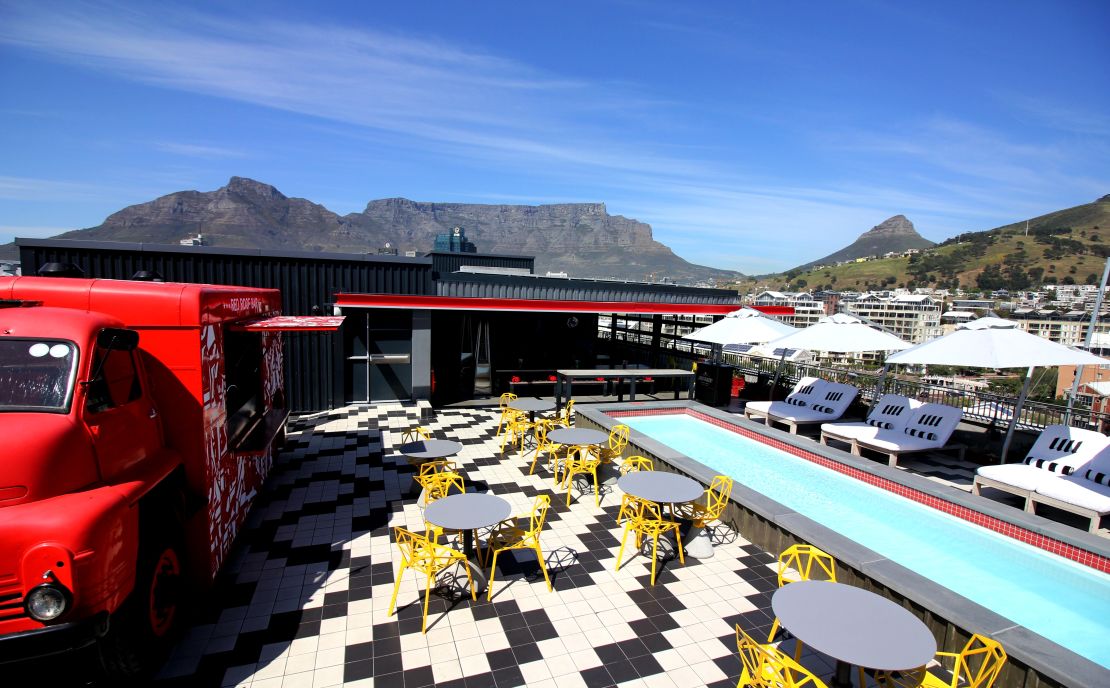
A career begins in exile
When Mpahlwa emerged from prison, the country he called home was in crisis.
“South Africa was in a state of emergency,” he said. “It was quite dangerous then for me.”
After his release, Mpahlwa was forced into exile, and with the help of an amnesty group that supports those facing human rights abuse, he was able to relocate to Berlin, Germany, where he spent the next 15 years.
There, he earned a master’s degree in architecture from the Technical University of Berlin in 1989 and began working for Pysall.Ruge, a design firm based in what is now the German capital.
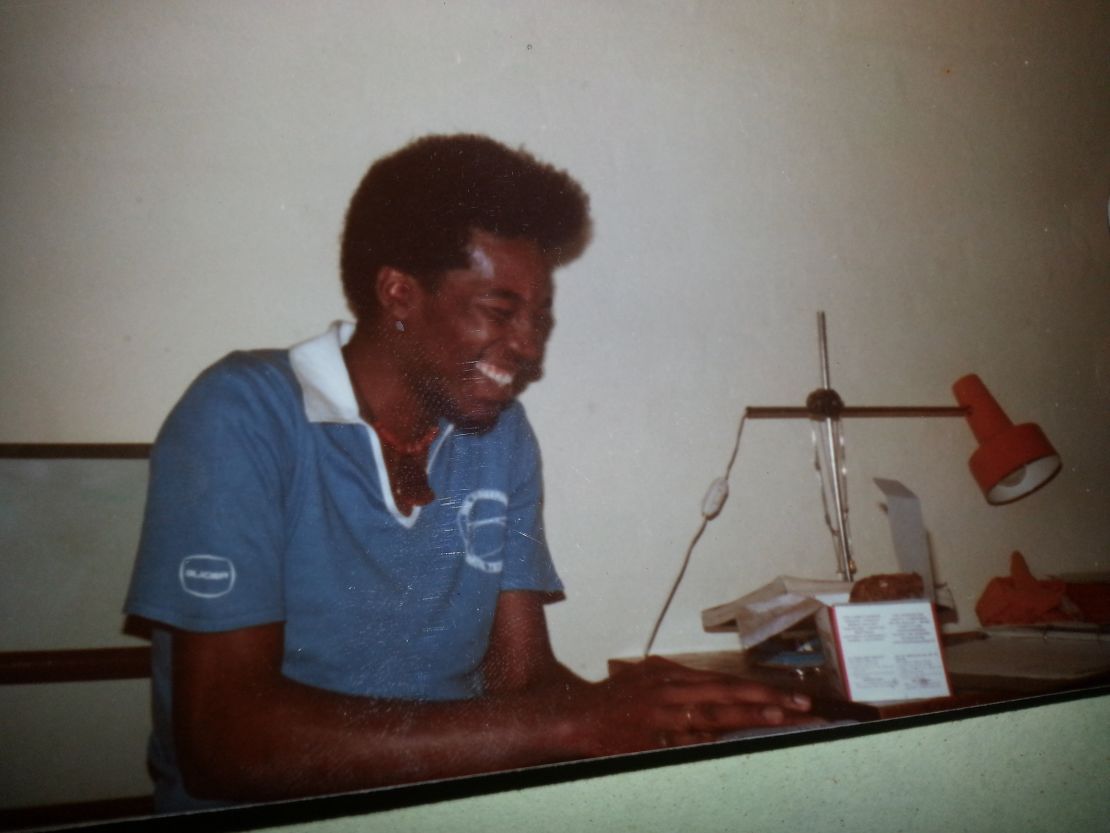
His first big project was the South African Embassy in Berlin, which Mpahlwa took as an opportunity to highlight the country’s aesthetics by incorporating artwork made from materials sourced from his home nation. Mpahlwa won the 2006 South African Institute of Architects Corobrik Award of Excellence for the building’s inclusive design.
“It was not an attempt not to build an African building in Berlin, but to have a building that represents with design references how South Africa looks like,” he said, adding that experience grew his appreciation for how design can shape a space or community.
“In the case of South Africa, looking at the desperate situation in our townships, I saw myself through architecture,” he reflected, “being able to contribute something to make better spaces to improve the quality of life.”
Building with social change in focus
Mpahlwa moved back to South Africa with his family in 2000 and started his first firm, MMA Architects. Despite apartheid ending in the early 1990s, the architect found a country struggling with the social and economic impact of more than 40 years of segregation policies.
“The reality is the majority of people of South Africa live in conditions that are actually below what we should be defining as an urban environment,” he said.
The architect focused on alleviating people’s roadblocks to creating a better life.
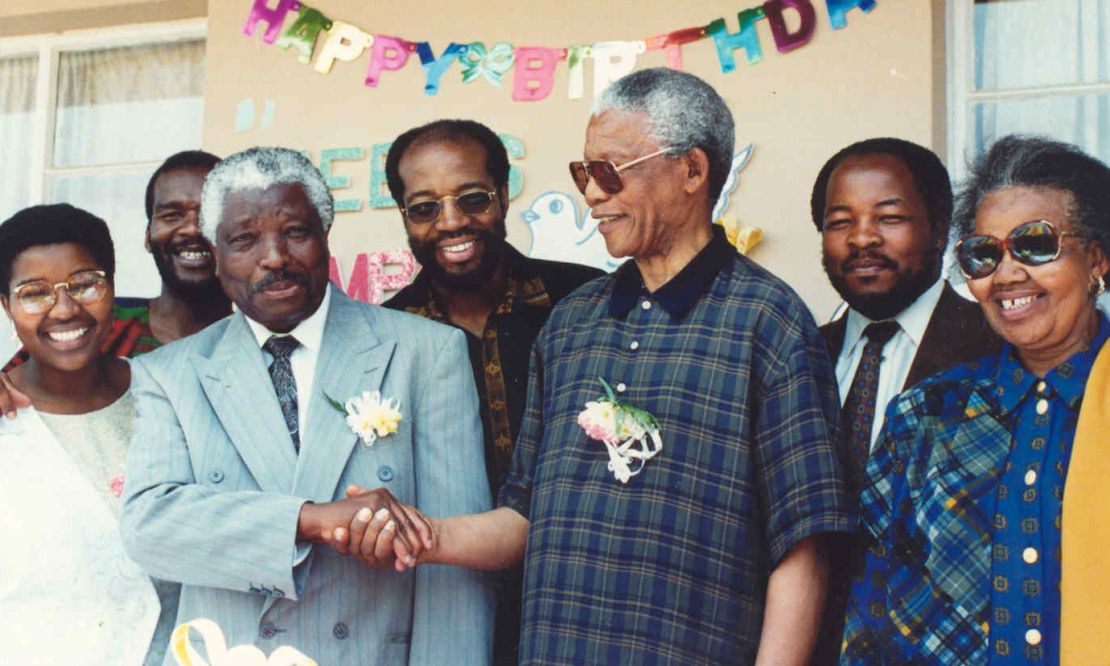
One of the first iterations of this ideology was the “50 schools in 50 weeks” project, developed after the Department of Basic Education approached Mpahlwa’s firm to replace 50 dilapidated huts with 50 updated school facilities in the Eastern Cape.
Later, Mpahlwa worked on the 10x10 Indaba Housing Project in Cape Town’s Mitchells Plain Township, employing cost-effective indigenous techniques using sandbags and timber to conserve energy and reduce labor costs. His efforts earned him the 2008 US-based Curry Stone Design Prize.
Most recently, Mpahlwa and his design firm took on one of the Cape’s most pressing housing problems at the Kosovo informal housing settlement in Philippi Township, Western Cape.
Nearly 15,000 people live in the impoverished area, which is full of run-down and even dangerous shacks that lack access to electricity, water, and sewer infrastructure.
“They are in places of battle,” Mpahlwa said, “not war, but of economic survival.”
CNN accompanied him to the site just days after heavy rains put the community underwater.
“You actually realize that the problem is not even necessarily the housing problem, but it’s a social and economic problem,” he explained. “People have been living in this informal settlement for 20 years, and nothing has changed for them.”
Inclusive design
Mpahlwa’s team has been upgrading the settlement and constructing safe housing since 2016. Unfortunately, due to hazardous conditions, he says they have only managed to build 400 homes out of the 6,000 needed.
“We have had a big problem of actually re-engineering the complete spatial arrangement of our cities and improving the public infrastructure, not just for the wealthy, but also for those people who are on the lower end of the economic scale,” he said. “I have to make sure that I understand the terrible conditions that people live under and how can I contribute something to change their lives and do it quickly.”
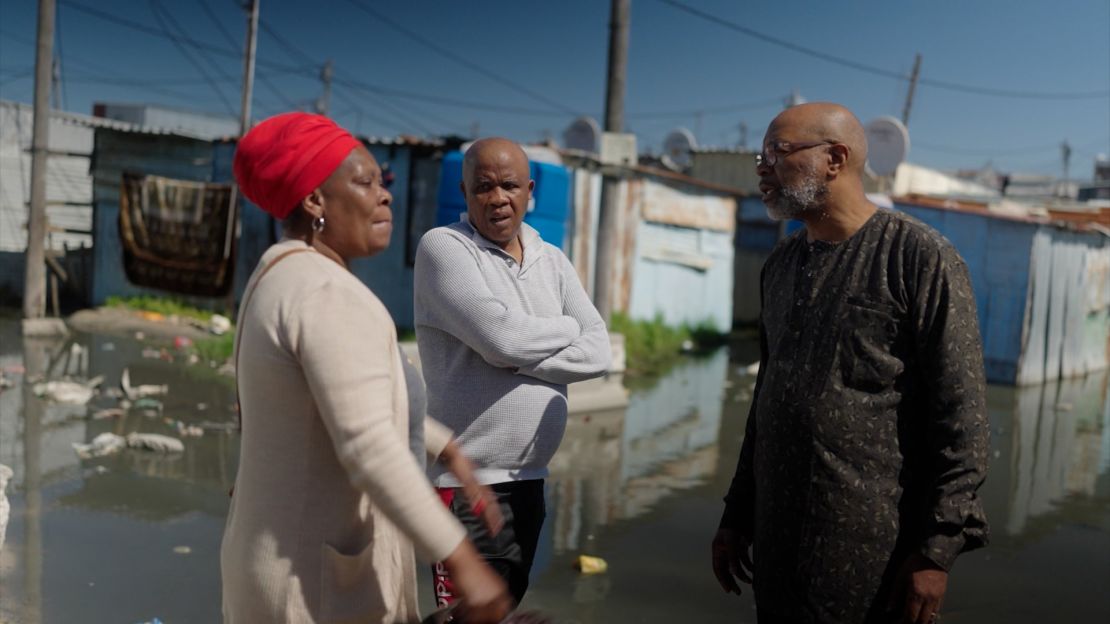
Mpahlwa’s approach to the design has been an inclusive one. The community he is building at the new Kosovo settlement has a mix of double and single-story homes to accommodate as many people as possible and make them accessible to those with disabilities.
While anticipating the new settlement, residents use another one of Mpahlwa’s building projects, iThemba Labantu Lutheran Community Center, which includes multipurpose facilities and a soup kitchen serving as a crucial support system for the community.
Amid delays due to the Covid-19 pandemic and zoning disputes, Mpahlwa is hopeful the project will progress.
“It’s a new community which is developing here,” said the architect. “We’ve just got to make it work and be patient.”
For now, Mpahlwa is focused on making housing equitable for everyone.
“That’s what designed for social change means – that you afford even ordinary people the best quality of life possible.”
